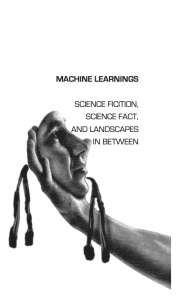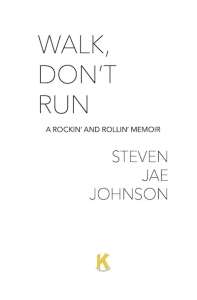A book is a masterpiece composed of various elements that work together to captivate readers and convey the author’s message. From the half-title page to the appendix, each component serves a distinct purpose in shaping the reader’s experience and enhancing the book’s overall impact.
In this comprehensive guide, we will explore every aspect of book composition, providing definitions, examples, and insights into their necessity or optionality.
Whether you’re a novice author embarking on your first manuscript or an experienced publisher preparing to release a new title, understanding the anatomy of a book is essential for creating a compelling and polished final product.
1. Half-Title Page

The half-title page, also known as the bastard title, precedes the title page and features only the main title of the book without the author’s name or any other information.
A half-title page typically displays the book’s main title centered on the page, often in a larger font size or different style than the rest of the text.
While not strictly necessary, the half-title page serves as a subtle introduction to the book’s title, creating anticipation for the reader before they encounter the full title page.
2. Title Page

The title page is the opening page of a book, featuring the title, subtitle (if applicable), author’s name, and publisher’s information. It provides readers with essential details about the book’s identity.
A title page might display the book’s title in large, bold font, followed by the author’s name and the publisher’s logo or imprint.
The title page is indispensable, serving as the reader’s initial point of contact and conveying vital information about the work.
3. Copyright Page
The copyright page, located on the back of the title page, contains copyright information, edition details, publication data, ISBN, and legal disclaimers.
A copyright page typically contains copyright symbols, publication dates, printing numbers, and statements regarding reproduction rights or permissions.
The copyright page is vital for legal and logistical purposes, ensuring the book is protected by copyright law and providing readers with pertinent publication information.
4. Table of Contents
The table of contents (TOC) lists chapters or sections of the book along with their corresponding page numbers, aiding readers in navigating the content efficiently.
A table of contents organizes chapter titles or section headings hierarchically, followed by page numbers indicating where each section begins.
While not mandatory for all books, a table of contents is highly recommended, particularly for lengthy or complex works, as it enhances usability and facilitates quick reference.
5. Foreword
The foreword, typically written by someone other than the author, provides insight into the book’s significance, context, or the author’s credentials. A foreword might be penned by a respected figure in the field, offering praise for the book’s contribution or providing background on the author’s expertise.
While not mandatory, a foreword can enhance the book’s credibility and endorsement, especially if authored by a well-known or respected individual.
6. Dedication
The dedication is a brief message or tribute in the front matter, expressing gratitude or acknowledging individuals who hold special significance to the author. An author may dedicate the book to a family member, mentor, or friend, honoring their support and inspiration. The dedication adds a personal touch to the book and is optional, allowing authors to recognize those who have played a meaningful role in their lives or careers.
7. Acknowledgments
The acknowledgments section in the front matter allows the author to thank individuals or organizations who contributed to the book’s creation or publication. Authors commonly acknowledge editors, beta readers, researchers, agents, publishers, and family members who provided support during the writing process. While not compulsory, acknowledgments demonstrate appreciation for the collaborative effort behind the book’s production and are a common practice.
8. Preface
The preface is a section preceding the main content of the book, typically written by the author or editor. It provides context, acknowledgments, and often sets the tone for the book. An author may use the preface to explain the inspiration behind the book, thank contributors, or provide insights into the writing process. Although optional, the preface adds value by providing readers with background information and establishing a personal connection with the author.
9. Introduction
The introduction, the opening section of the book, presents the purpose, scope, and structure of the work, guiding readers through what to expect. In a non-fiction book, the introduction outlines main topics and their significance, while a novel may introduce setting, characters, and central conflict. While not always required, an introduction orients readers and sets the stage for the book, enhancing its accessibility and overall coherence.
10. Prologue
A prologue is an introductory section that precedes the main narrative of the book. It sets the stage, provides context, or introduces key themes or characters. A prologue might offer background information on the story’s setting or historical context, establish a tone or mood, or foreshadow events to come. The inclusion of a prologue depends on the author’s narrative style and the requirements of the story. While not always essential, it can enhance the reader’s understanding and engagement with the narrative.
11. Chapters
Chapters divide the book into smaller sections, each focusing on a specific topic, theme, or storyline, providing a logical progression for readers. In a textbook, chapters cover different subjects or units of study, while in a novel, they divide the narrative into manageable segments. Chapters are essential for most books, organizing content and facilitating navigation, particularly in works with complex subject matter or narrative structures.
12. Epilogue
An epilogue, appearing after the main narrative or conclusion, offers additional insights, reflections, or closure to the story or subject matter. An epilogue in a novel might provide a glimpse into characters’ futures, while in non-fiction, it could offer updates or reflections on discussed topics. The epilogue is optional and provides supplementary information or closure, enhancing the reader’s understanding and satisfaction.
13. Glossary
A glossary, found at the end of the book, contains definitions of specialized terms or technical vocabulary used throughout the text. A science book’s glossary may define terms like “photosynthesis,” while a fantasy novel’s glossary may explain “magic system.” Although optional, a glossary improves reader comprehension, particularly for works with specialized terminology, making the text more accessible.
14. Appendices (Plural of Appendix)
Appendices are supplementary sections included at the end of the book, containing additional information, data, or resources that complement the main text. Appendices may include charts, graphs, maps, extended bibliographies, or detailed research methodologies referenced in the book. Appendices are optional and depend on the content and purpose of the book. They provide readers with supplementary material for further exploration and understanding.
15. Index
An index, an alphabetical list of topics referenced in the book, along with corresponding page numbers, aids readers in locating specific information. An index may include entries for characters, key terms, events, or subjects discussed throughout the book. While not essential for all books, an index enhances usability, particularly in reference or academic texts, allowing readers to find information quickly.
Understanding the intricate elements of a book is essential for authors and publishers alike. Each component contributes to the book’s structure, accessibility, and overall effectiveness. By comprehensively exploring the anatomy of a book, authors can craft engaging works, while publishers can produce polished and professional publications.
Whether embarking on a new writing project or preparing to bring a book to market, this guide equips you with the knowledge needed to navigate the complexities of book composition with confidence and clarity.
